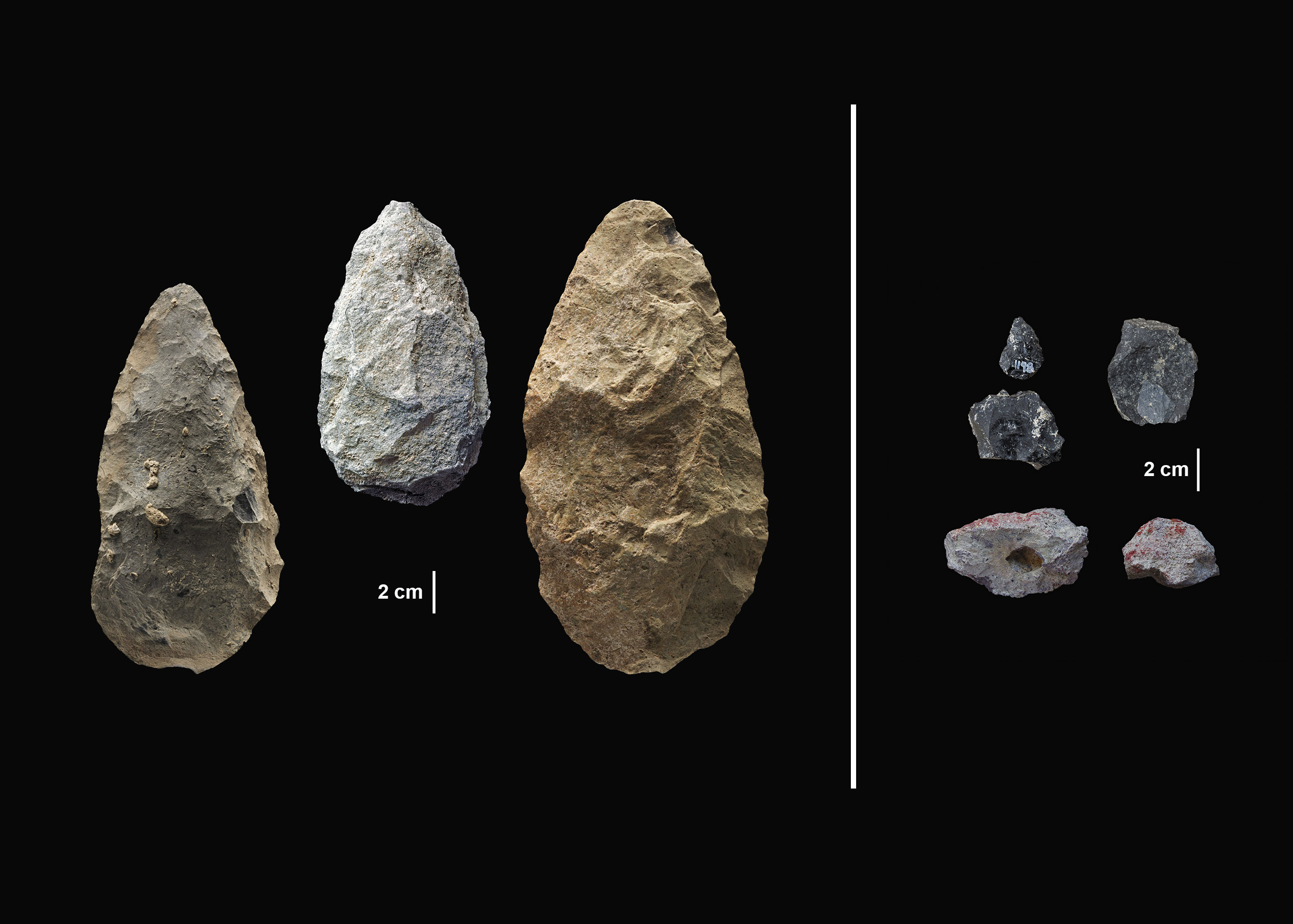
This article is available to Premium members of Popular Archaeology.
Become a member or upgrade to a Premium membership: REGISTER HERE.
Member Login:
This is the example article

This article is available to Premium members of Popular Archaeology.
Become a member or upgrade to a Premium membership: REGISTER HERE.
Member Login:
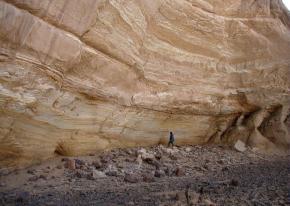
UNIVERSITY OF HUDDERSFIELD—By analyzing a prehistoric site in the Libyan desert, a team of researchers from the universities of Huddersfield, Rome and Modena & Reggio Emilia has been able to establish that people in Saharan Africa were cultivating and storing wild cereals 10,000 years ago. In addition to revelations about early agricultural practices, there could be a lesson for the future, if global warming leads to a necessity for alternative crops.
The importance of the find came together through a well-established official collaboration between the University of Huddersfield and the University of Modena & Reggio Emilia.
The team has been investigating findings from an ancient rock shelter at a site named Takarkori in south-western Libya. It is desert now, but earlier in the Holocene age[our present age], some 10,000 years ago, it was part of the “green Sahara” and wild cereals grew there. More than 200,000 seeds – in small circular concentrations – were discovered at Takarkori, which showed that hunter-gatherers developed an early form of agriculture by harvesting and storing crops.
But an alternative possibility was that ants, which are capable of moving seeds, had been responsible for the concentrations. Dr Stefano Vanin, the University of Huddersfield’s Reader in Forensic Biology and a leading entomologist in the forensic and archaeological fields, analyzed a large number of samples, now stored at the University of Modena & Reggio Emilia. His observations enabled him to demonstrate that insects were not responsible and this supports the hypothesis of human activity in collection and storage of the seeds.
The investigation at Takarkori provides the first-known evidence of storage and cultivation of cereal seeds in Africa. The site has yielded other key discoveries, including the vestiges of a basket, woven from roots, that could have been used to gather the seeds. Also, chemical analysis of pottery from the site demonstrates that cereal soup and cheese were being produced.
A new article that describes the latest findings and the lessons to be learned appears in the journal Nature Plants. Titled Plant behaviour from human imprints and the cultivation of wild cereals in Holocene Sahara, it is co-authored by Anna Maria Mercuri, Rita Fornaciari, Marina Gallinaro, Savino di Lernia and Dr Vanin.
One of the article’s conclusions is that although the wild cereals, harvested by the people of the Holocene Sahara, are defined as “weeds” in modern agricultural terms, they could be an important food of the future.
“The same behavior that allowed these plants to survive in a changing environment in a remote past makes them some of the most likely possible candidates as staple resources in a coming future of global warming. They continue to be successfully exploited and cultivated in Africa today and are attracting the interest of scientists searching for new food resources,” state the authors.
Research based on the findings at Takarkori continues. Dr Vanin is supervising PhD student Jennifer Pradelli – one of a cohort of doctoral candidates at the University of Huddersfield funded by a £1 million award from the Leverhulme Trust – and she is analyzing insect evidence in order to learn more about the evolution of animal breeding at the site.
________________________________________
A Takarkori rock shelter. University of Huddersfield
_____________________________________________________
Article Source: University of Huddersfield news release
_____________________________________________________
Become a new Popular Archaeology premium subscriber.
___________________________________________
Travel and learn with Far Horizons.
______
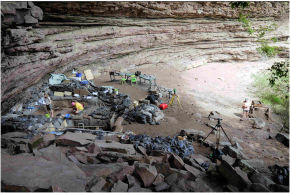
University of the Witwatersrand—The Howiesons Poort of southern Africa is a well-known techno-tradition in the Middle Stone Age. Material culture associated with it includes backed stone tools, the manufacturing of bone tools and other implements, and engraved ochre and ostrich eggshell that have been taken as early signs of symbolic expression. Since its first inception, the Howiesons Poort (between roughly 65,800 BP and 59,500 BP) has been considered unusual because of its so-called ‘innovative technologies’ reminiscent of the Later Stone Age/Upper Palaeolithic. In the recent years, the hunting technology associated with this exceptional industry has been discussed and debated.
Research collaboration between the University of Liège (TraceoLab) and the University of the Witwatersrand, led by Dr Paloma de la Peña, a researcher at the Evolutionary Studies Institute at Wits University in South Africa, has revealed one of the strongest and oldest bodies of evidence for the use of barbs as projectiles in prehistory. This discovery was made when small quartz implements from Sibudu, showing tiny notches on their edges, were examined in detail to understand the reasons for such features. Sibudu is a rock shelter located near Tongaat in KwaZulu Natal, South Africa, and has a long and diverse archaeological sequence. It has in recent years become central to the study of South African Middle Stone Age culture and technology. The research was published today in the Journal of Archaeological Science.
Barbs are laterally hafted armatures that serve to increase the cutting capacity of a projectile if hafted parallel to the haft or to retain the projectile in the animal if hafted obliquely to the haft. They can be used either independently on self-pointed spears or arrows, or in combination with weapon tips. Their use is well-known from the later stages of the European Upper Palaeolithic, but it is not clear when they first appeared, or how widely they were used before the European Upper Palaeolithic and the African Later Stone Age. The presence of barbs usually implies the use of some kind of glue, which adds to the technical know-how of prehistoric hunter-gatherers.
In their study of the Sibudu material, the authors undertook an extensive experimental program where they knapped quartz tools similar to the archaeological ones, and replicated processes that they thought would be responsible for the formation of notches. The experiments included intentional making of notches on some of the tools, the use of others as projectile elements, and the exposure of some to trampling to simulate the situation at settlement sites. The experimental and archaeological material was then analyzed in-depth using specialized methods that focus on microscopic wear features. The viewing of the experimental and archaeological wear patterns side by side led the archaeologists to propose that use as barbs is the best explanation for the damage observed on those pieces that can be considered ancient tools, while many of the artifacts in the studied sample only show accidental damage coming from knapping, and in some cases trampling or other taphonomic processes.
The Howiesons Poort barbs were identified on the basis of combinations of features such as the impact breaks and obliquely oriented lateral edge damage, visible with a stereomicroscope, and microscopic linear features that require magnifications of 100–500× and special filters to be seen. The authors also present evidence of the use of unretouched quartz blanks as barbs. These findings imply that the Howiesons Poort hunting weaponry was more varied than previously imagined, and involved the mounting of both formal tools – such as the famous segments – and unretouched knapping products as elements in composite weapons.
For some researchers, the Howiesons Poort still represents an anomalous and short-lived technological development, whereas for others it reflects the origins of complex cognition in the Middle Stone Age. The recent identification of barbs adds weight to the view of technological sophistication and innovation in the Middle Stone Age of Southern Africa.
__________________________________
The archaeological site of Sibudu, KwaZulu-Natal, South Africa. View of the excavation area within the rock shelter. M. Ecker, Wikimedia Commons
__________________________________
Quartz implements with micronotches from Sibudu (KwaZulu Natal, South Africa). The discovery of these types of pieces motivated the present functional study that found evidence of the use of quartz barbs in Sibudu’s Howiesons Poort. TraceoLab, Dr Paloma de la Peña and the University of the Witwatersrand
______________________________________________
Experimental knapping of quartz to establish a framework for understanding the quartz micronotches. TraceoLab and Aurore Val
______________________________________________
Examples of experimental hafted barbs before and after use. On the left the barbs attached with sinew moved along the shaft and hit each other upon impact. On the right only small fragments of the barbs attached with sinew and resin remain on the shaft after the shoot, resulting in small fragments partly comparable to the archaeological material. TraceoLab
________________________________________________
Quartz micronotches identified as barbs and possible barbs after the usewear analyses. TraceoLab
______________________________________________
Microscopic traces of two of the quartz micronotches identified as barbs. TraceoLab
_______________________________________________
Article Source: Wits University news release
______________________________________________
Become a new Popular Archaeology premium subscriber.
___________________________________________
Travel and learn with Far Horizons.
______
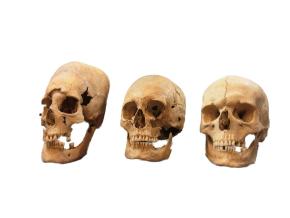
In an interdisciplinary study funded by the Volkswagen Foundation, the international research team analyzed the ancient genomes of almost 40 early medieval people from southern Germany. While most of the ancient Bavarians looked genetically like Central and Northern Europeans, one group of individuals had a very different and diverse genetic profile. Members of this group were particularly notable in that they were women whose skulls had been artificially deformed at birth. Such enigmatic deformations give the skull a characteristic tower shape and have been found in past populations from across the world and from different periods of time. “Parents wrapped their children’s heads with bandages for a few months after birth in order to achieve the desired head shape,” explained Dr. Michaela Harbeck. “It is difficult to answer why they carried out this elaborate process, but it was probably used to emulate a certain ideal of beauty or perhaps to indicate a group affiliation.” So far, scholars have only speculated about origins of the practice in medieval Europe. “The presence of these elongated skulls in parts of eastern Europe is most commonly attributed to the nomadic Huns, led by Atilla, during their invasion of the Roman Empire from Asia, but the appearance of these skulls in western Europe is more mysterious, as this was very much the fringes of their territory,” said Dr. Krishna Veeramah, first author of the study.
By analyzing DNA obtained from these elongated skulls, Professor Joachim Burger’s team revealed that these women likely migrated to early Bavarian settlements from eastern Europe. “Although there is evidence that there was some genetic contribution from Central Asia, the genomic analysis points to the fact that women with deformed skulls in this region are genetically most similar to today’s south eastern Europeans, and that the Huns likely played only a minor role in directly transmitting this tradition to Bavaria,” Burger noted. Besides their deformed skulls, these women also tended to have darker hair and eye color than the other Bavarians they were buried and probably lived with, who primarily had fair hair and blue eyes.
But the migration of females to Bavaria did not only involve those possessing elongated skulls. Only a little later, two women can be identified who most closely resemble modern Greeks and Turks. In contrast, there was no evidence of men with drastically different genetic profiles. “Most of these foreign women are found with grave goods that look unremarkable compared to the rest of the buried population,” added Veeramah. “These cases of female migration would have been invisible from the material culture alone.”
“This is an example of long-range female mobility that bridges larger cultural spaces and may have been a way for distant groups to form new strategic alliances during this time of great political upheaval in the absence of a previous Roman hegemony,” stated Burger. “We must expect that many more unprecedented population-dynamic phenomena have contributed to the genesis of our early cities and villages.”
“Interestingly, though our results are preliminary, there are no major traces of genetic ancestry in these early inhabitants of Bavaria that might have come from soldiers of the Roman army,” said Harbeck. “We need to keep investigating on an even broader basis how much Celtic and Roman ancestry is in these early Bavarians.”
_________________________________
This is an artificially deformed female skull from Altenerding, an Earyl Medieavel site in Bavaria. Skull deformations like this were formerly attributed to the Huns. However, the new palaeogenomic study shows that while this individual carries Central Asian genetic components, in all likelihood she migrated from the Black Sea region to Bavaria along with other women around 500 AD. State Collection for Anthropology and Palaeoanatomy Munich
____________________________________________
These are strong, intermediate, and non-deformed skulls (from left to right) from the Early Medieval sites Altenerding and Straubing in Bavaria, Germany. State Collection for Anthropology and Palaeoanatomy Munich
______________________________________________
These eare early Medieval Grave goods from Altenerding, Bavari Germany. Bavarian State Archaeological Collection
__________________________________________
Article Source: JOHANNES GUTENBERG UNIVERSITAET MAINZ news release
______________________________________________
Become a new Popular Archaeology premium subscriber.
___________________________________________
Travel and learn with Far Horizons.
______
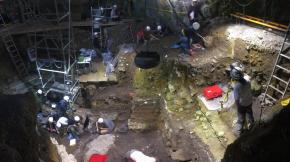
UPPSALA UNIVERSITY—In a multidisciplinary study published in PNAS, an international team of researchers combined archaeological, genetic and stable isotope data to encapsulate 4,000 years of Iberian biomolecular prehistory.
The team analyzed human remains of 13 individuals from the north and south of Spain, including the rich archaeological site of El Portalón, which forms part of the well-known site of Atapuerca in Burgos and in itself harbors 4 millennia of Iberian prehistory. The study also involved important sites like Cueva de los Murciélagos in Andalusia, from which the genome of a 7,245 year-old Neolithic farmer was sequenced making it the oldest sequenced genome in southern Iberia representing the Neolithic Almagra Pottery Culture – the early agriculturalists of southern Spain.
Background
Prehistoric migrations have played an important role in shaping the genetic makeup of European populations. After the last glacial maximum about 20,000 years ago, Europe was inhabited by hunter-gatherer groups and two major migrations during the last 10,000 years had massive impacts on lifestyle and the gene pool of European populations. First, groups originally coming from the Middle East and Anatolia introduced farming practices to Europe during the Neolithic. Less than 5,000 years ago, herder groups from the Pontic-Caspian steppe spread over the European continent. As both of these movements originated in the east, the most western parts of the continent were last to be reached by these migrations. While archaeogenetic studies have shown that both of these migrations have replaced more than half of the gene pool in Central and Northern Europe, much less is known about the influence of these events in Iberian populations, particularly in the most southern areas such as Andalusia.
Two independent migrations spread farming practices across Europe
The first farmers mainly reached Iberia following a coastal route through the northern Mediterranean Sea. The new study demonstrates that Neolithic Iberians show genetic differences to the migrant farmers that settled in Central and Northern Europe. “This suggests that all early farmers in Iberia trace most of their ancestry to the first Neolithic people that migrated into the peninsula and that later contributions from their central European counterparts were only minor”, says archaeogeneticist Cristina Valdiosera from La Trobe University in Australia, one of the lead authors of the study.
These Mediterranean route migrants show a strong genetic connection with the modern-day inhabitants of the Mediterranean island of Sardinia. “We can probably consider modern Sardinians relatively direct descendants of the people who spread farming practices across the Mediterranean region around 8,000 years ago”, adds Mattias Jakobsson, population geneticist at Uppsala University, Sweden and one of the senior authors of the study.
First wave of eastern migration involved small number of individuals
Despite potential other entrances into Iberia, such as North Africa or mainland Europe, the researchers did not find substantial regional differences within Iberia. Uppsala University’s Torsten Günther, population geneticist and one of the lead authors of this study, says: “While geographic differences seem minor, we do see some differences over time due to interaction and genetic exchange between groups.” The first Iberian farmers show remarkably low levels of genetic diversity, indicating that the first wave of eastern migration to establish itself on the peninsula was relatively small. Following this initial period of low diversity, the newly arrived populations grew in size and mixed with the local hunter-gatherers, rapidly increasing genetic diversity during later periods.
Low genetic impact of later/Bronze Age migrations in Iberia
While recent studies have demonstrated that a massive migration of Pontic-Caspian steppe herders during the Late Neolithic/Bronze Age transition is responsible for a major population turnover in central and northern Europe, the authors report in this study that the genetic influence of this migration on contemporary southwestern Europeans, namely the prehistoric Iberians, was only minor. This confirms that the genetic history of Iberia was unique as it has mostly been influenced by the main prehistoric migration associated with the introduction of farming practices – the Neolithic Revolution.
Homogenous diet in Iberian farmers
The authors also investigated the diet of these Neolithic farmers throughout almost 4,000 years, corroborating that despite the significant biological interaction between culturally different groups the farming culture predominated from the very beginning and continued over time. Molecular archaeologist Colin Smith from La Trobe University, one of the senior authors, explains: “Interestingly, while we do see a substantial genetic influx of hunter-gatherer ancestry into farmers over time, the diet of these early farmers does not change. Their terrestrial diet is characteristic of farming cultures and persist temporally and geographically across the millennia.”
The study illustrates the power of interdisciplinary research for understanding the full complexity of European prehistory. “Overall, these results emphasize the differences between the westernmost populations and their central European counterparts and highlight the need for detailed regional studies to reveal the full complexity of prehistoric migrations,” Dr. Valdiosera concludes.
_____________________________________
El Portalón cave in the Sierra de Atapuerca (northern Spain) contains four millennia of biomolecular prehistory. Eneko Iriarte (Universidad de Burgos)
__________________________________________________
Skeletal remains of a 7,245-year-old Early Neolithic Farmer from Andalusia, Spain (Cueva de los Murciélagos) sequenced in this study. 1) Diagram of funerary position, 2) Skull of the individual, 3) Funerary remains as discovered in the cave. Rafael Martínez-Sánchez (Universidad de Granada) and Antonio Moreno Rosa (Universidad de Córdoba)
__________________________________________________
Representation of an Iberian Neolithic farmer. Maria de la Fuente (Maria de la Fuente Archaeological Illustrations)
_____________________________________
Article Source: Uppsala University news release
__________________________________________________
Become a new Popular Archaeology premium subscriber.
___________________________________________
Travel and learn with Far Horizons.
______
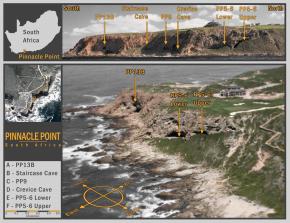
An eruption a hundred times smaller than Mount Toba – that of Mount Tambora, also in Indonesia, in 1815 – is thought to have been responsible for a year without summer in 1816. The impact on the human population was dire – crop failures in Eurasia and North America, famine and mass migrations. The effect of Mount Toba, a super-volcano that dwarfs even the massive Yellowstone eruptions of the deeper past, would have had a much larger, and longer-felt, impact on people around the globe.
The scale of the ash-fall alone attests to the magnitude of the environmental disaster. Huge quantities of aerosols injected high into the atmosphere would have severely diminished sunlight – with estimates ranging from a 25 to 90 percent reduction in light. Under these conditions, plant die-off is predictable, and there is evidence of significant drying, wildfires and plant community change in East Africa just after the Toba eruption.
If Mount Tambora created such devastation over a full year – and Tambora was a hiccup compared to Toba – we can imagine a worldwide catastrophe with the Toba eruption, an event lasting several years and pushing life to the brink of extinctions.
In Indonesia, the source of the destruction would have been evident to terrified witnesses – just before they died. However, as a family of hunter-gatherers in Africa 74,000 years ago, you would have had no clue as to the reason for the sudden and devastating change in the weather. Famine sets in and the very young and old die. Your social groups are devastated, and your society is on the brink of collapse.
The effect of the Toba eruption would have certainly impacted some ecosystems more than others, possibly creating areas – called refugia – in which some human groups did better than others throughout the event. Whether or not your group lived in such a refuge would have largely depended on the type of resources available. Coastal resources, like shellfish, are highly nutritious and less susceptible to the eruption than the plants and animals of inland areas.
When the column of fire, smoke and debris blasted out the top of Mount Toba, it spewed rock, gas and tiny microscopic pieces (cryptotephra) of glass that, under a microscope, have a characteristic hook shape produced when the glass fractures across a bubble. Pumped into the atmosphere, these invisible fragments spread across the world.
Panagiotis (Takis) Karkanas, director of the Malcolm H. Wiener Laboratory for Archaeological Science, American School of Classical Studies, Greece, saw a single shard of this explosion under a microscope in a slice of archaeological sediment encased in resin.
“It was one shard particle out of millions of other mineral particles that I was investigating. But it was there, and it couldn’t be anything else,” says Karkanas.
The shard came from an archaeological site in a rockshelter called Pinnacle Point 5-6, on the south coast of South Africa near the town of Mossel Bay. The sediments dated to about 74,000 years ago.
“Takis and I had discussed the potential of finding the Toba shards in the sediments of our archaeological site, and with his eagle eye, he found one,” explains Curtis W. Marean, project director of the Pinnacle Point excavations. Marean is the associate director of the Institute of Human Origins at Arizona State University and honorary professor at the Centre for Coastal Palaeoscience at Nelson Mandela University, South Africa.
Marean showed the shard image to Eugene Smith, a volcanologist with the University of Nevada at Las Vegas, and Smith confirmed it was a volcanic shard.
“The Pinnacle Point study brought me back to the study of glass shards from my master’s thesis 40 years earlier,” says Smith.
Early in the study, the team brought in expert cryptotephra scientist Christine Lane who trained graduate student Amber Ciravolo in the needed techniques. Racheal Johnsen later joined Ciravalo as lab manager and developed new techniques.
From scratch, with National Science Foundation support, they developed the Cryptotephra Laboratory for Archaeological and Geological Research, which is now involved in projects not only in Africa, but in Italy, Nevada and Utah.
Encased in that shard of volcanic glass is a distinct chemical signature, a fingerprint that scientists can use to trace to the killer eruption. In their paper in Nature, the team describes finding these shards in two archaeological sites in coastal South Africa, tracing those shards to Toba through chemical fingerprinting and documenting a continuous human occupation across the volcanic event.
“Many previous studies have tried to test the hypothesis that Toba devastated human populations,” Marean notes. “But they have failed because they have been unable to present definitive evidence linking a human occupation to the exact moment of the event.”
Most studies have looked at whether or not Toba caused environmental change. It did, but such studies lack the archaeological data needed to show how Toba affected humans.
The Pinnacle Point team has been at the forefront of development and application of highly advanced archaeological techniques. They measure everything on site to millimetric accuracy with a “total station,” a laser-measurement device integrated to handheld computers for precise and error-free recording.
Naomi Cleghorn with the University of Texas at Arlington, recorded the Pinnacle Point samples as they were removed.
Cleghorn explains, “We collected a long column of samples – digging out a small amount of sediment from the wall of our previous excavation. Each time we collected a sample, we shot its position with the total station.”
The sample locations from the total station and thousands of other points representing stone artifacts, bone, and other cultural remains of the ancient inhabitants were used to build digital models of the site.
“These models tell us a lot about how people lived at the site and how their activities changed through time,” say Erich Fisher, associate research scientist with the Institute of Human Origins, who built the detailed photorealistic 3D models from the data. “What we found was that during and after the time of the Toba eruption people lived at the site continuously, and there was no evidence that it impacted their daily lives.”
In addition to understanding how Toba affected humans in this region, the study has other important implications for archaeological dating techniques. Archaeological dates at these age ranges are imprecise – 10 percent (or 1000s of years) error is typical. Toba ash-fall, however, was a very quick event that has been precisely dated. The time of shard deposition was likely about two weeks in duration – instantaneous in geological terms.
“We found the shards at two sites,” explains Marean. “The Pinnacle Point rockshelter (where people lived, ate, worked and slept) and an open air site about 10 kilometers away called Vleesbaai. This latter site is where a group of people, possibly members of the same group as those at Pinnacle Point, sat in a small circle and made stone tools. Finding the shards at both sites allows us to link these two records at almost the same moment in time.”
Not only that, but the shard location allows the scientists to provide an independent test of the age of the site estimated by other techniques. People lived at the Pinnacle Point 5-6 site from 90,000 to 50,000 years ago. Zenobia Jacobs with the University of Wollongong, Australia, used optically stimulated luminescence (OSL) to date 90 samples and develop a model of the age of all the layers. OSL dates the last time individual sand grains were exposed to light.
“There has been some debate over the accuracy of OSL dating, but Jacobs’ age model dated the layers where we found the Toba shards to about 74,000 years ago – right on the money,” says Marean. This lends very strong support to Jacobs’ cutting-edge approach to OSL dating, which she has applied to sites across southern Africa and the world.
“OSL dating is the workhorse method for construction of timelines for a large part of our own history. Testing whether the clock ticks at the correct rate is important. So getting this degree of confirmation is pleasing,” says Jacobs.
In the 1990s, scientists began arguing that this eruption of Mount Toba, the most powerful in the last two million years, caused a long-lived volcanic winter that may have devastated the ecosystems of the world and caused widespread population crashes, perhaps even a near-extinction event in our own lineage, a so-called bottleneck.
This study shows that along the food-rich coastline of southern Africa, people thrived through this mega-eruption, perhaps because of the uniquely rich food regime on this coastline. Now other research teams can take the new and advanced methods developed in this study and apply them to their sites elsewhere in Africa so researchers can see if this was the only population that made it through these devastating times.
____________________________________
The research team has been excavating caves at Pinnacle Point, South Africa, for nearly 20 years. Glass shards from Mount Toba were discovered at the PP5-6 location. Erich Fisher
________________________________________________
The glass shards at Pinnacle Point were carried nearly 9000 km from the source in Indonesia. Erich Fisher
_______________________________________________
The photo shows a volcanic glass shard erupted 74,000 years ago from the Toba volcano in Indonesia found at an archaeological site nearly 9000 km away at Vleesbaai, South Africa. Racheal Johnsen
Article Source: Arizona State University news release
If you liked this article, read Where Hominins Became Human, in the Fall 2016 issue of Popular Archaeology.
________________________________________________
*Publication: Eugene Smith, Zenobia Jacobs, Racheal Johnsen, Minghua Ren, Erich C. Fisher, Simen Oestmo, Jayne Wilkins, Jacob A. Harris, Panagiotis Karkanas, Shelby Fitch, Amber Ciravolo, Deborah Keenan, Naomi Cleghorn, Christine S. Lane, Thalassa Matthews, and Curtis W. Marean (2018). Humans thrived in South Africa through the Toba super-volcanic eruptions ~74,000 years ago. Nature DOI:10.1038/nature25967.
Become a new Popular Archaeology premium subscriber.
___________________________________________
Travel and learn with Far Horizons.
______

AUSTRALIAN NATIONAL UNIVERSITY—Researchers from The Australian National University (ANU) have helped put together the most comprehensive study ever conducted into the origins of people in Vanuatu – regarded as a geographic gateway from Asia to the Remote Pacific.
The new research, published across two separate research papers, uses a combination of DNA analyses of ancient skeletons and modern samples, as well as archaeological evidence, to put together a complete timeline of migration to the island nation.
The results confirm that Vanuatu’s first people were of the Lapita culture and arrived 3,000 years ago from South East Asia, followed by Papuan arrivals from the island of New Britain, in the Bismarck Archipelago just to the east of New Guinea and part of the nation of Papua New Guinea.
Dr Stuart Bedford of the ANU School of Culture History and Language said this was the first time researchers had been able to look at a full sequence of DNA samples from the Vanuatu islands.
“We’ve been able to track a complete genetic timeline at regular intervals starting with the first inhabitants right through to modern times,” Dr Bedford said.
“The very first generation of people into Vanuatu are primarily Asian, then very quickly you see a series of migrations of Papuan people from the Bismarck Archipelago who had been living in the region for around 50,000 years.
“That trend continues over the next 3,000 years right up until today as the genetic ancestry was mostly replaced by that of Papuan migrants. The people of Vanuatu today, like many peoples of the Pacific, can claim a dual heritage.”
Co Researcher Professor Matthew Spriggs of the ANU School of Archaeology and Anthropology said for the first time researchers could determine exactly where these Papuan migration groups came from.
“They came from New Britain, a Papuan island just east of New Guinea,” Professor Spriggs said.
“This makes sense. New Britain has some of the earliest known Lapita sites.
“So what we think happened is that Lapita people after arriving in New Britain moved fairly directly on to Vanuatu and encouraged some of the local populations already in place on New Britain to move there as well.”
Dr Bedford said the strength of the Lapita culture was evident in the continuity of the language.
“The Lapita people who originally came to Vanuatu from South East Asia spoke a form of Austronesian,” Dr Bedford said.
“That language persisted and over 120 descendant languages continue to be spoken today, making Vanuatu the most linguistically diverse place on Earth per capita.
“This is a unique case, where a population’s genetic ancestry was replaced but its languages continued.”
_____________________________________
Burial excavations on Uripiv Island Malakula. ANU
__________________________________________________
Ancient skeleton at the Teouma site on Efate. ANU
______________________________________
Article Source: Australian National University news release
The two papers were published in the Nature Ecology & Evolution and Current Biology journals respectively.
__________________________________________________
Become a new Popular Archaeology premium subscriber.
___________________________________________
Travel and learn with Far Horizons.
______

The faces of disaster through the ages are legion, and the dusty places of archaeological digs in Israel have been no exception, as archaeologists at the Tel Gezer excavation site in central Israel will tell you after they encountered 3,200-year-old skeletal remains of three individuals.
As they were conducting excavations during the summer of 2017, traces of human bones emerged as they dug within a stratum that evidenced a fiery destruction. They were articulated skeletons. The archaeologists could see that one of them, an adult, whose remains were badly decomposed and burned, was lying with hands over the head. The bones of a child, whose remains were also burned and badly decomposed, were also found. And finally, as they were closing down the season, they found the remains of yet a third individual, an adult, whose bones were significantly better preserved. This person, it appeared, was lying in a fetal-like position, as if to defend against the falling debris of surrounding collapsing walls, the stones and mud-brick of which still lay atop the skeleton when archaeologists encountered it. The physical circumstances of the remains clearly suggested that these were not intended burials.
Who were they and what happened in this place over 3,000 years ago?
According to co-directors Dr. Steven Ortiz of the Tandy Institute for Archaeology and Dr. Sam Wolff of the Israel Antiquities Authority and colleagues, they were likely inhabitants of the city, likely Canaanite at this time, that fell in a conflagration during the onslaught of Egyptian armed forces under Pharaoh Merenptah, ancient Egypt’s famous fourth ruler during the Nineteenth Dynasty. Merenptah is known to have undertaken several major military campaigns, at least one of which took his army into what was ancient Canaan during the 13th century B.C.
_______________________________
Remains of the third adult skeleton, found within the Late Bronze Age destruction. Courtesy Steven Ortiz and Tandy Institute for Archaeology-Tel Gezer Excavations, from A Decade of Discovery: The Tandy Excavations at Tel Gezer, Popular Archaeology, Spring 2018
_________________________________________
Excavating the third adult. Courtesy Steven Ortiz and Tandy Institute for Archaeology-Tel Gezer Excavations, from A Decade of Discovery: The Tandy Excavations at Tel Gezer, Popular Archaeology, Spring 2018
__________________________________________
The mummy of Merenptah, who orchestrated several major military campaigns, including one that laid waste to the cities in Canaan. Wikimedia Commons
_____________________________________
Above: The Merneptah (Merenptah) Stele. Also known as the Israel Stele or the Victory Stele of Merneptah—it is an inscription by the ancient Egyptian king Merneptah (reign: 1213 to 1203 BC) discovered by Flinders Petrie in 1896 at Thebes, and now housed in the Egyptian Museum in Cairo. The text is largely an account of Merenptah’s victory over the Libyans and their allies, but the last 3 of the 28 lines deal with a separate campaign in Canaan, then part of Egypt’s imperial possessions. The stele is sometimes referred to as the “Israel Stela” because a majority of scholars translate a set of hieroglyphs in line 27 as “Israel.” The relevant lines of the inscription have been translated:
The princes are prostrate, saying, “Peace!”
Not one is raising his head among the Nine Bows.
Now that Tehenu (Libya) has come to ruin,
Hatti is pacified;
The Canaan has been plundered into every sort of woe:
Ashkelon has been overcome;
Gezer has been captured;
Yano’am is made non-existent.
Israel is laid waste and his seed is not;
Hurru is become a widow because of Egypt.
The “nine bows” is a term the Egyptians used to refer to their enemies; the actual enemies varied according to time and circumstance. Hatti and Ḫurru are Syro-Palestine, Canaan and Israel are smaller units, and Ashkelon, Gezer and Yanoam are cities within the region; according to the stele, all these entities fell under the rule of the Egyptian empire at that time.
Image: Webscribe, Wikimedia Commons Narrative: The Merneptah Stele, Wikipedia Commons
_______________________________________________
The discovery capped off ten years of excavations which, though focused primarily on Iron Age period occupations that evidenced structures and artifacts from the time of the biblical account’s United Monarchy of Israel and the reigns of later Judahite kings, also yielded finds attributable to Late Bronze Age occupation, a critical time period in the ancient Mediterranean and Middle East.
A summary report of the excavation project’s ten years of work are published in the Spring 2018 Issue of Popular Archaeology Magazine, to be released in March.
___________________________________
Become a new Popular Archaeology premium subscriber.
___________________________________________
Travel and learn with Far Horizons.
______
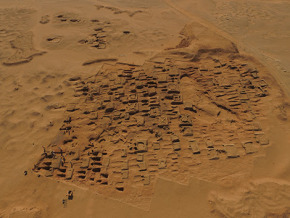
The archaeological site of Sedeinga is located in Sudan, a hundred kilometers to the north of the third cataract of the Nile, on the river’s western shore. Known especially for being home to the ruins of the Egyptian temple of Queen Tiye, the royal wife of Amenhotep III, the site also includes a large necropolis containing sepulchers dating from the kingdoms of Napata and Meroe (seventh century BCE–fourth century CE), a civilization1 mixing local traditions and Egyptian influences. Tombs, steles, and lintels have just been unearthed by an international team led by researchers from the CNRS and Sorbonne Université as part of the French Section of Sudan’s Directorate of Antiquities, co-funded by the CNRS and the Ministry for Europe and Foreign Affairs.2 They represent one of the largest collections of Meroitic inscriptions, the oldest language of black Africa currently known.
The necropolis of Sedeinga stretches across more than twenty-five hectares and is home to the vestiges of at least eighty brick pyramids and over a hundred tombs, dating from the kingdoms of Napata and Meroe (seventh century BCE–fourth century CE). The research programs carried out since 20093 have focused on the chronology of the construction of this necropolis, which is difficult as there is very little remaining historical information on this civilization. The researchers have shown that most of the pyramids and tombs are buildings dating from the era of the Napata kingdom that were later adjusted by the Meroitics. These adjustments were thus made five centuries after the initial building on the site, which the Meroitics supplemented with new chapels built out of brick and sandstone blocks on the western side of the pyramids, and which were intended for the worship of the deceased. This practice was particular to the Napatans and Meroitics, who veritably revered the monuments of the past, unlike their Egyptian neighbors.
__________________________________________
Aerial photo of the dig in December 2017 © Vincent Francigny / Sedeinga archaeological mission
__________________________________
Pieces of decorated sandstone, such as steles as well as lintels and door surrounds, have been discovered at the surface, providing magnificent examples of Meroitic funerary art. For example, pigments—mainly blue in color—have been preserved on a stele found lying on its side. This is rare for objects of this kind, which typically are subjected to the vagaries of time. Another exceptional find: a chapel lintel representing Maat, the Egyptian goddess of order, equity, and peace. This is the first extant representation of this goddess depicting her with African characteristics. During the last excavation campaign in late 2017, the researchers discovered a stele in the name of a Lady Maliwarase. The stele sets out her kinship with the notables of Nubia (in the north of the kingdom of Meroe): she was the sister of two grand priests of Amon, and one of her sons held the position of governor of Faras, a large city bordering the second cataract of the Nile. The archeologists have also unearthed a lintel inscribed with four lines of text describing the owner of the sepulcher, another great lady, Adatalabe. She hailed from an illustrious lineage that included a royal prince, a member of the reigning family of Meroe. These two steles written for high-ranking women are not isolated examples in Sedeinga. In Meroitic society, it was indeed women who embodied the prestige of a family and passed on its heritage.
_______________________________
The Ataqeloula stele, discovered in November 2017 at the Sedeinga necropolis. It dates from the second century CE and commemorates a woman from Sedeinga high society, as well as prestigious members of her family. © Vincent Francigny / Sedeinga archaeological mission
_________________________________________
The funerary chapel surround, depicting the goddess Maat. It also dates from the second century CE (Meroe kingdom) © Vincent Francigny / Sedeinga archaeological mission
_________________________________________
Stele in the name of Lady Maliwarase. © Claude Rilly / Sedeinga archaeological mission
_______________________________
Funerary chapel lintel. The four lines of text describe the owner, Lady Adatalabe © Vincent Francigny / Sedeinga archaeological mission
_________________________________________
All these discoveries advance our knowledge of Meroitic civilization, which was born of the cultural intermixing of Egypt and black Africa that still characterizes Sudan today. These funerary objects represent the largest collection of texts in Meroitic, the oldest language of black Africa, written in characters borrowed from ancient Egyptian.
Article Source: CNRS news release
_________________________________________
Notes
1 The kingdoms of Napata and Meroe formed one and the same civilization, known as the “Kush kingdom” by their ancient Egyptian neighbors.
2 The director of the mission, Claude Rilly, is a CNRS researcher at the Langage, Langues et Cultures d’Afrique Noire laboratory (CNRS/Inalco). He is co-leading this mission with Vincent Francigny, director of the SFDAS (MEAE). This research has been funded by the excavation commission of the French Ministry for Europe and Foreign Affairs (MEAE) and the Orient et Méditerranée – Textes-Archéologie-Histoire laboratory (CNRS/Sorbonne Université/Université Panthéon-Sorbonne/EPHE/Collège de France). The campaign carried out between November, 14 and December 19, 2017, the last to date, was awarded the Fondation Jean et Marie-Thérèse Leclant prize.
3 Excavation work on the site began in 1963 and recommenced in 2009. It will continue until 2020 and is divided into three four-year plans, the last of which began in November 2017.
_________________________________________
Become a new Popular Archaeology premium subscriber.
___________________________________________
Travel and learn with Far Horizons.
______
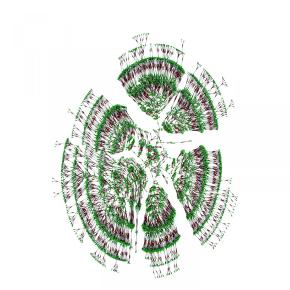
COLUMBIA UNIVERSITY SCHOOL OF ENGINEERING AND APPLIED SCIENCE—Thanksgiving gatherings could get bigger—a lot bigger—as science uncovers the familial bonds that bind us. From millions of interconnected online genealogy profiles, researchers have amassed the largest, scientifically-vetted family tree to date, which at 13 million people, is slightly bigger than a nation the size of Cuba or Belgium. Published in the journal Science, the new dataset offers fresh insights into the last 500 years of marriage and migration in Europe and North America, and the role of genes in longevity.
“Through the hard work of many genealogists curious about their family history, we crowdsourced an enormous family tree and boom, came up with something unique,” said the study’s* senior author, Yaniv Erlich, a computer scientist at Columbia University and Chief Science Officer at MyHeritage, a genealogy and DNA testing company that owns Geni.com, the platform that hosts the data used in the study. “We hope that this dataset can be useful to scientists researching a range of other topics.”
The researchers downloaded 86 million public profiles from Geni.com, one of the world’s largest collaborative genealogy websites, and used mathematical graph theory to clean and organize the data. What emerged among other smaller family trees was a single tree of 13 million people spanning an average of 11 generations. Theoretically, they’d need to go back another 65 generations to converge on one common ancestor and complete the tree. Still, the dataset represents a milestone by moving family-history searches from newspaper obituaries and church archives into the digital era, making population-level investigations possible. The researchers also make it easy to overlay other datasets to study a range of socioeconomic trends at scale.
“It’s an exciting moment for citizen science,” said Melinda Mills, a demographer at University of Oxford who was not involved in the study “It demonstrates how millions of regular people in the form of genealogy enthusiasts can make a difference to science. Power to the people!”
The dataset details when and where each individual was born and died, and mirrors the demographics of Geni.com individuals, with 85 percent of profiles originating from Europe and North America. The researchers verified that the dataset was representative of the general U.S. population’s education level by cross-checking a subset of Vermont Geni.com profiles against the state’s detailed death registry.
“The reconstructed pedigrees show that we are all related to each other,” said Peter Visscher, a quantitative geneticist at University of Queensland who was not involved in the study. “This fact is known from basic population history principles, but what the authors have achieved is still very impressive.”
Marriage, Migration and Genetic Relatedness Industrialization profoundly altered work and family life, and these trends coincide with shifting marriage choices in the data. Before 1750, most Americans found a spouse within six miles (10 kilometers) of where they were born, but for those born in 1950, that distance had stretched to about 60 miles (100 kilometers), the researchers found. “It became harder to find the love of your life,” Erlich jokes.
Before 1850, marrying in the family was common—to someone who was, on average, a fourth cousin, compared to seventh cousins today, the researchers found. Curiously, the researchers found that between 1800 and 1850, people traveled farther than ever to find a mate—nearly 12 miles (19 kilometers) on average—but were more likely to marry a fourth cousin or closer. Changing social norms, rather than rising mobility, may have led people to shun close kin as marriage partners, they hypothesize.
In a related observation, they found that women in Europe and North America have migrated more than men over the last 300 years, but when men did migrate, they traveled significantly farther on average.
Genes and Longevity To try and untangle the role of nature and nurture in longevity, the researchers built a model and trained it on a dataset of 3 million relatives born between 1600 and 1910 who had lived past the age of 30. They excluded twins, individuals who died in the U.S. Civil War, World War I and II, or in a natural disaster (inferred if relatives died within 10 days of each other).
They compared each individual’s lifespan to that of their relatives and their degree of separation and found that genes explained about 16 percent of the longevity variation seen in their data—on the low end of previous estimates which have ranged from about 15 percent to 30 percent.
The results indicate that good longevity genes can extend someone’s life by an average of five years, said Erlich. “That’s not a lot,” he adds. “Previous studies have shown that smoking takes 10 years off of your life. That means some life choices could matter a lot more than genetics.”
Significantly, the study also shows that the genes that influence longevity act independently rather than interacting with each other, a phenomenon called epistasis. Some scientists have used epistasis to explain why large-scale genomic studies have so far failed to find the genes that encode complex traits like intelligence or longevity.
If some genetic variants act together to influence longevity, the researchers would have seen a greater correlation among closely related individuals who share more DNA, and thus more genetic interactions. However, they found a linear link between longevity and genetic relatedness, ruling out widespread epistasis.
“This is important in the field because epistasis has been proposed as a source of ‘missing heritability,'” said the study’s lead author, Joanna Thornycroft, a former graduate student at the Whitehead Institute for Biomedical Research, now at Wellcome Sanger Institute.
Adds Visscher: “This is entirely in line with theory and previous inference from SNP [variant] data, yet for some reason many researchers in human genetics and epidemiology continue to believe that there is a lot of non-additive genetic variation for common diseases and quantitative traits.”
The dataset is available for academic research via FamiLinx.org, a website created by Erlich and his colleagues. Though FamiLinx data is anonymized, curious readers can check Geni.com to see if a family member may have added them there. If so, there is a good chance that they may have made it into the 13 million-person family tree.
In addition to his position at MyHeritage, a company that allows consumers to discover their family history through genetic tests and its genealogy platform, Erlich is a computer science professor at Columbia Engineering, a member of Columbia’s Data Science Institute, and an adjunct core member of the New York Genome Center (NYGC).
Other study authors are Assaf Gordon, of NYGC and the Whitehead Institute; Tal Shor, of MyHeritage and Technion; Omer Weissbrod of Israel’s Weizmann Institute of Science; Dan Geiger of Technion; Mary Wahl of Whitehead Institute, NYGC and Harvard; Michael Gershovits, Barak Markus and Mona Sheikh of Whitehead Institute; Melissa Gymrek of University of California at San Diego; and Gaurav Bhatia, Daniel MacArthur and Alkes Price of Harvard and the Broad Institute.
_________________________________
In the above 6,000 person family tree cleaned and organized using graph theory, individuals spanning seven generations are represented in green, with their marital links in red. Columbia University
______________________________________________
Article Source: Columbia University School of Engineering and Applied Science news release
*Study: Quantitative analysis of population-scale family trees with millions of relatives.
______________________________________________
Become a new Popular Archaeology premium subscriber.
___________________________________________
Travel and learn with Far Horizons.
______
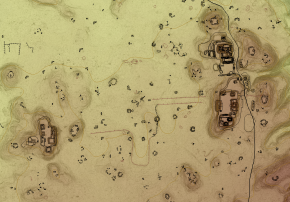
For over three decades, archaeologist Anabel Ford, Director of the Mesoamerican Research Center of the University of California, Santa Barbara, has been exploring and studying the ancient Maya site of El Pilar. Divided along the imaginary line between western Belize and northeastern Guatemala, El Pilar is considered the largest site in the Belize River region, boasting over 25 known plazas and hundreds of other structures, covering an area of about 120 acres. Monumental construction at El Pilar began in the Middle Preclassic period, around 800 BCE, and at its height centuries later it supported more than 20,000 people. Visitors today can see some of its structural remains revealed by archaeology, although Ford has taken care to ensure that most of it remains un-exposed, enshrouded and thus protected within its jungle canopy. She is as much an ardent conservationist as she is an archaeologist.
She is also among the pioneering archaeologists who have recently applied a new technology, known as LiDAR, or Light Detection and Ranging, a remote sensing method using pulsed laser to “see”, often from airborne devices or aircraft, what cannot be seen on the surface from the air by the naked eye. Over the past few years it has been used to uncover a much larger ancient Maya world — such as monumental structures and other cultural features that have remained invisible because they have been hidden for centuries beneath the dense cloak of a tropical landscape. The media has sensationalized some recent LiDAR-related discoveries by other archaeological teams, such as the detection of more than 60,000 ancient Maya cultural features within Guatemala’s Maya Biosphere Reserve, touted in a National Geographic article as a “major breakthrough” in Maya archaeology; and the University of Arizona article that reported the discovery of thousands more structures previously undetected in the area of ancient Ceibal, also in Guatemala. And Ford, now already a veteran of four years applying LiDAR to El Pilar and its surrounding region, has already “covered 10 km2” of the forested area by applying the new technology.
But she is not hesitant to add that “LiDAR is not a magic wand”.* She asserts that “there is still a vital need to use ground-truthing procedures to validate findings by archaeologists in the field”.* What she means is that, once an initial LiDAR survey is done, the long and heavy-duty work of verifying the data includes physically identifying and/or uncovering the corresponding features on the ground. “In the course of our field validation over the past four years,” she writes in a recent report of her findings, “we have learned much about the relationship between the landscape and the LiDAR-based visualizations, and importantly between the visualizations and the validation of cultural features. It really all boils down to putting “boots on the ground.”*
In other words, though the startling and amazing initial discoveries being made with LiDAR from the air may be grist for sensational news stories, it only tells a small part of the whole story of discovery, the most important aspect of which takes place on the surface through the hard work of ground-truthing — testing the visual data with the reality on the ground. Ford has already thus far “validated 1,214 “GoTo” points, mapped 1,335 new cultural features, verified 611 domestic structures, and mapped 7 civic monumental sites”, according to her report.* Through her efforts with LiDAR in 2013, she also uncovered and defined the features of a unique Maya monumental structure at El Pilar which she has dubbed the “Citadel”, an architectural edifice with no precedent in the Maya world.
Given the massive amounts of data that LiDAR has provided, says Ford, the resulting research, analysis and groundwork will go on for years to come, opening a significantly expanded window on the ancient Maya world.
Ford and her colleagues report about the findings in an article published in the upcoming Spring 2018 issue of Popular Archaeology Magazine, to be released in March.
____________________________________
‘Before’: Air view of the El Pilar area. Courtesy BRASS/El Pilar
____________________________________
‘After’: Mapping using LiDAR data reveals the ancient structures at El Pilar, many of which have been invisible for centuries. Courtesy BRASS/El Pilar
________________________________________________
*From LiDAR is not a magic wand, a feature article to be published in Reports in the Spring 2018 issue of Popular Archaeology Magazine.
________________________________________________
Become a new Popular Archaeology premium subscriber.
___________________________________________
Travel and learn with Far Horizons.
______
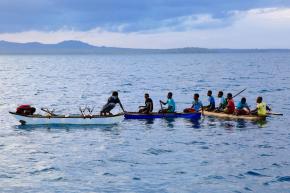
MAX PLANCK INSTITUTE FOR THE SCIENCE OF HUMAN HISTORY—The study, published in Nature Ecology & Evolution and led by a multidisciplinary research team at the Max Planck Institute for the Science of Human History (MPI-SHH) together with researchers in France, Australia, New Zealand, Germany and Vanuatu, reveals that migrations of people from the Bismarck Archipelago in Oceania to the previously settled islands of the Pacific began as early as 2,500 years ago, much earlier than previously thought. The Remote Oceanian island nation of Vanuatu is the gateway to the rest of the Pacific and understanding its demographic history is critical to uncovering that of the wider region. The earliest inhabitants of Vanuatu, arriving about 3,000 years ago, were the Lapita peoples who spoke a form of Austronesian language and who had largely East Asian genetic ancestry. But Vanuatu’s contemporary population has largely Near Oceanian heritage, showing that over time the genetic ancestry of the early inhabitants was mostly replaced by that of Bismarck Archipelago migrants, who began arriving very soon after initial settlement. Yet the original Austronesian language persisted and over 120 descendant languages continue to be spoken today, making Vanuatu the per capita most linguistically diverse place on Earth. Vanuatu therefore presents an unprecedented case, where a population’s genetic ancestry but not its languages were replaced. Through analyses of new ancient and modern genome-wide data, the researchers show that rather than occurring in one wave, the genetic replacement was long and complex, likely the result of a sustained long-distance contact between Near and Remote Oceania. This provides demographic support for a model from historical linguistics, in which the initial Austronesian language of Vanuatu survived by being continually adopted by incoming Papuan migrants.
The Austronesian Expansion, which began around 5,500 years ago likely in modern-day Taiwan, was the most geographically extensive dispersal of farming peoples in prehistory, ultimately carrying people as far west as Madagascar and all the way east to Rapa Nui. These seafaring Neolithic people initially expanded out across Island Southeast Asia, carrying farming technology and a major branch of the Austronesian language family, eventually reaching Near Oceania where they encountered the indigenous Papuan peoples of New Guinea and the Bismarck Archipelago. The initial settlement east beyond the Solomon Islands and out into Remote Oceania only began around 3,000 years ago, with Austronesian-speaking groups associated with the Lapita pottery culture rapidly expanding east out to Vanuatu, New Caledonia, Fiji and the islands of Western Polynesia. A previous ancient DNA study of Lapita burial sites has shown that these earliest inhabitants had East Asian ancestry with negligible evidence of Papuan genetic admixture. But the present-day genetic make-up of Remote Oceania suggests at least some degree of Papuan ancestry, meaning there must have been subsequent Papuan migration and admixture into the Pacific from Near Oceania.
In order to understand this previously undescribed migration, a multidisciplinary team of researchers brought together different lines of evidence from the fields of genetics, archaeology and linguistics. They generated genome-wide data from the bones and teeth of 19 ancient individuals from across Vanuatu, Tonga, French Polynesia and the Solomon Islands, a significant addition to the ancient DNA record in a region whose environmental conditions generally leads to poor ancient DNA preservation. As co-lead author Kathrin Nägele of the MPI-SHH says, “The identification of the petrous bone, which has recently been shown to provide fantastic aDNA preservation, has been a real game changer for such regions that were previously considered to be almost inaccessible.” The ancient DNA was complemented by new contemporary genome-wide data from 27 present-day inhabitants of Vanuatu, collected as part of a long-term linguistic and anthropological fieldwork project run by co-authors Professor Russell Gray and Dr. Heidi Colleran of the MPI-SHH.
The ancient DNA provided direct evidence that Papuan people began arriving in Vanuatu soon after initial settlement by Austronesians. “We found a genetically Papuan-related individual dating to around 2,500 years ago in Vanuatu, far earlier than had been previously estimated using only modern genetic data,” explains co-lead author Dr. Cosimo Posth, also of the MPI-SHH. The researchers were able to show that the ancestry of the initial Austronesian inhabitants of Vanuatu has been largely replaced by ancestry from Papuan peoples coming from the Bismarck Archipelago. But this genetic replacement was not straightforward, as Dr. Posth says, “Our analyses show that this replacement did not occur in a one-time mass migration event but rather happened incrementally over time, suggesting an enduring long-distance network between groups in Near and Remote Oceania.” The authors also directly described ancient individuals with sex-biased admixture, where Papuan males intermixed with Austronesian women, as long assumed based on analyses of the modern genetic make-up of the South Pacific.
Yet despite this genetic replacement, the people of present-day Vanuatu continue to speak languages descended from those spoken by the initial Austronesian inhabitants rather than any Papuan language of the incoming migrants. As Professor Gray, Director of the Department of Linguistic and Cultural Evolution at the MPI-SHH, says, “Population replacement with language continuity is extremely rare – if not unprecedented – in human history. The linguist Bob Blust has long argued for a model in which a separate Papuan expansion reaches Vanuatu soon after initial Austronesian settlement, with the initial, and likely undifferentiated, Austronesian language surviving as a lingua franca for diverse Papuan migrant groups.” Dr. Adam Powell, senior author of the study and also of the MPI-SHH, continues, “The demographic history suggested by our ancient DNA analyses provides really strong support for this historical linguistic model, with the early arrival and complex, incremental process of genetic replacement by people from the Bismarck Archipelago. This provides a compelling explanation for the continuity of Austronesian languages despite the almost complete replacement of the initial genetic ancestry of Vanuatu.”
The study in particular highlights the importance of interdisciplinary work and the value that multiple lines of evidence can have in deepening our understanding of human history. As Professor Johannes Krause, a senior author and Director of the Department of Archaeogenetics at the MPI-SHH, explains, “This multidisciplinary work has begun to uncover the complex, localized demographic processes that drove the initial colonization of the wider South Pacific and formed the enduring cultural and linguistic spheres that continue to shape the Pacific today.” Ongoing engagement with local communities in Vanuatu, as well as with the Vanuatu Cultural Center, has been critical to this success. As Dr. Colleran points out, “One strength of this study is the degree to which we are collaborating with communities in Vanuatu who have a real stake in these results and who generously volunteered their data to help answer these questions. We will be back in the field very soon to share the results with those communities and to hear their thoughts on the whole process.” The progress of this continuing fieldwork can be followed on the Nature Ecology & Evolution Community website.
________________________________________
Young men in canoes in Northwest Malakula, Vanuatu. Russell Gray & Heidi Colleran
_________________________________________________
Maps showing the migrations in the area, including, in the final map, the migrations revealed by the current study. Hans Sell, adapted from Skoglund et al., Genomic insights into the peopling of the Southwest Pacific. Nature (2016).
______________________________________________________
Dr. Frédérique Valentin excavating at Uripiv Island, Malakula, Vanuatu. Stuart Bedford
____________________________________________________
Article Source: Max Planck Institute for the Science of Human History news release
_________________________________________________
Become a new Popular Archaeology premium subscriber.
___________________________________________
Travel and learn with Far Horizons.
______
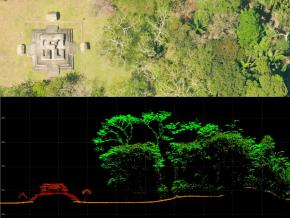
UNIVERSITY OF ARIZONA—With the help of airborne laser mapping technology, a team of archaeologists, led by University of Arizona professor Takeshi Inomata, is exploring on a larger scale than ever before the history and spread of settlement at the ancient Maya site of Ceibal in Guatemala.
In a new paper published in the journal PLOS ONE, Inomata and his colleagues explain how they commissioned the use of LiDAR, or light detection and ranging, technology to map a significantly larger area of Ceibal than ever before recorded.
LiDAR provides highly accurate, detailed 3-D maps of ground surface topography. Over the course of just a few days at Ceibal, a small airplane, equipped with lasers powerful enough to peer through the dense jungle canopy, soared above the site, mapping—with a less than 10-centimeter margin of error—the shape, size and location of ancient Maya pyramids, platforms, ceremonial centers, roads, water reservoirs and other structures previously undocumented by archaeologists.
The resulting map covers 470 square kilometers that would have been extremely challenging for archaeologists to reach on foot, and includes the locations of more than 15,000 ancient Maya architectural remains. Previously, archaeologists had information on only about 8 square kilometers and fewer than 1,000 structures in the area.
“This kind of understanding was really unthinkable some years ago, and now suddenly we can have all these data,” Inomata said. “The scale is completely different.”
Inomata and his colleagues used the LiDAR data to reconstruct a timeline of growth and change at Ceibal, building upon what they already knew from previous excavations about when different styles of structures appeared between about 1,000 B.C. and A.D. 950.
They outline their methods in detail in the PLOS ONE paper.
“What we tried to do here was to set up a systematic method of analyzing this LiDAR data over a wide area, and then translate it into an interpretation of temporal sequences and social change,” said Inomata, a professor and Agnese Nelms Haury Chair in Environment and Social Justice in the UA School of Anthropology.
Combining LiDAR and excavation data then allowed the archaeologists to reconstruct settlement patterns over a long period of time.
“Looking at the LiDAR image, you can see the specific types of architecture—pyramids, long structures—and we know from our excavations what time period they’re from. So just looking at the shape of the structures, we can see this network of communities and ceremonial centers from specific periods,” Inomata said.
Lasers Let Humans Explore Challenging Terrain
Mapping an archaeological site in a densely vegetated area such as the Guatemalan jungle is a daunting task—one traditionally done on foot. Because of the challenging terrain, only about 1.9 square kilometers of Ceibal had been completely mapped previously—by Harvard archaeologists in the 1960s—while about 6 more kilometers were surveyed with less detail.
It was in that small area that Inomata and his colleagues have been conducting archaeological excavations for the last 13 years.
Since joining the growing number of researchers who have used the LiDAR surveying method to help with interpretation of archaeological sites, Inomata and his team have gained access to data that would have been nearly impossible to obtain through on-foot surveys. The LiDAR survey, which was conducted by the University of Houston’s National Center for Airborne Laser Mapping, even found a few things that the original on-the-ground mapping done in the 1960s missed.
“The maps that Harvard made were incredibly accurate, considering they were all ground survey, but with LiDAR we found a lot more buildings than were on the map previously, and their locations are very accurate,” said paper co-author Melissa Burham, a UA graduate student in anthropology.
As a growing number of researchers turn to the LiDAR surveying method to aid in the interpretation of archaeological sites, Inomata and his team hope their colleagues in the field may follow a similar process to what they used at Ceibal, which they plan to apply again in their regional survey in the state of Tabasco in Mexico, where they will begin work in February.
“In archaeology, excavation is always important, but you can’t excavate everything, so you look for patterns on a smaller scale that you can extrapolate over a larger region,” said Burham, who co-authored the paper along with Inomata, UA anthropology professor Daniela Triadan and researchers from Guatemala and Japan. “That’s really what this paper aims to do. This can help other people understand growth at other Maya centers and help with dating methods.”
____________________________________
On the left is an aerial image of an area of Ceibal. On the right is the same area, as mapped by LiDAR. Takeshi Inomata/University of Arizona
________________________________________________
At the top is an aerial image of a reconstructed temple at Ceibal. At the bottom is the same area, mapped by thousands of individual laser points. Takeshi Inomata/University of Arizona
____________________________________
UA archaeologist Takeshi Inomata during an excavation at Ceibal. Takeshi Inomata/University of Arizona
____________________________________
Article Source: University of Arizona news release
________________________________________________
Become a new Popular Archaeology premium subscriber.
___________________________________________
Travel and learn with Far Horizons.
______
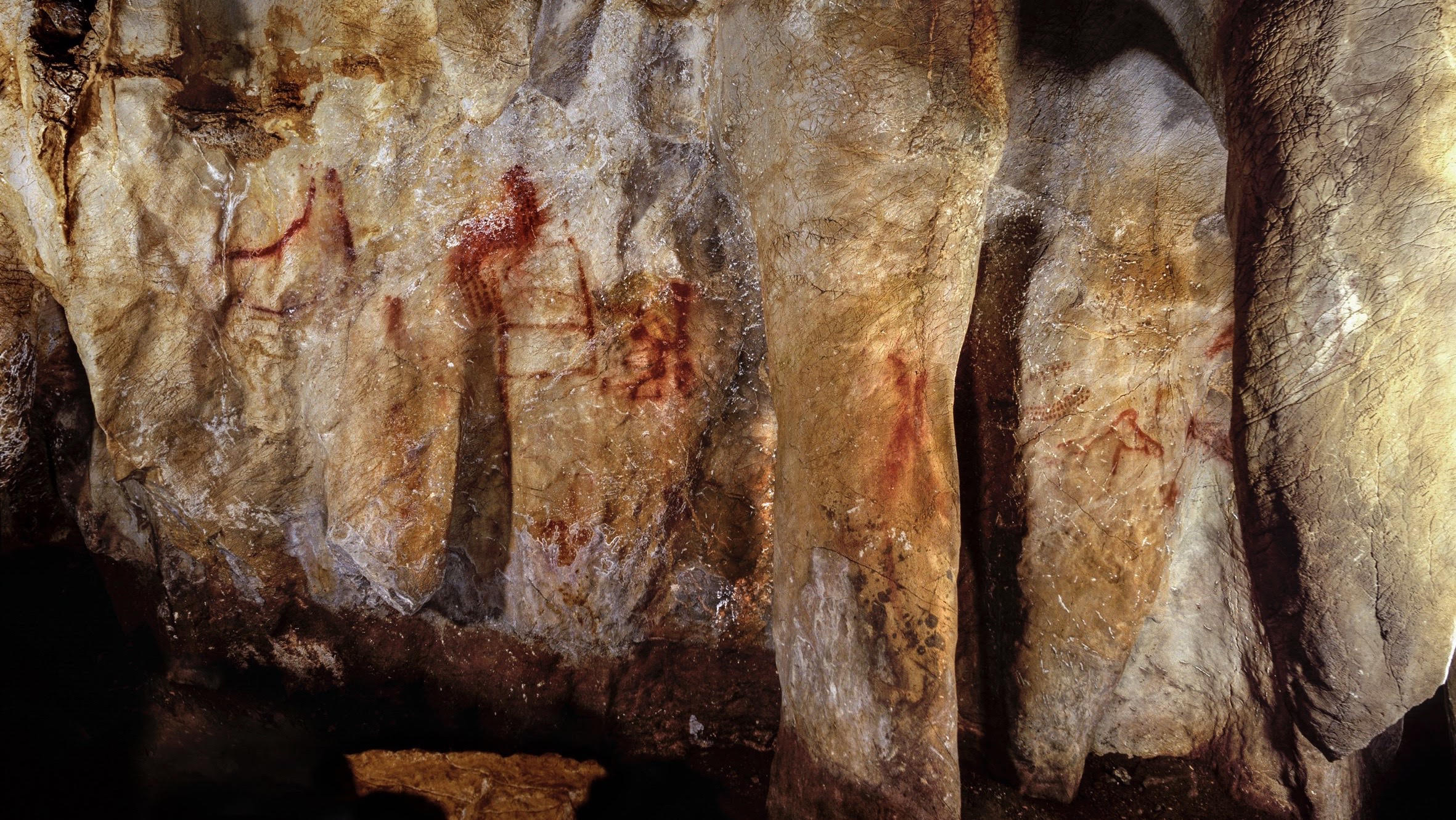
This article is available to Premium members of Popular Archaeology.
Become a member or upgrade to a Premium membership: REGISTER HERE.
Member Login:

HOWARD HUGHES MEDICAL INSTITUTE—Scientists once could reconstruct humanity’s distant past only from the mute testimony of ancient settlements, bones, and artifacts.
No longer. Now there’s a powerful new approach for illuminating the world before the dawn of written history – reading the actual genetic code of our ancient ancestors. Two papers* published in the journal Nature on February 21, 2018, more than double the number of ancient humans whose DNA has been analyzed and published to 1,336 individuals – up from just 10 in 2014.
The new flood of genetic information represents a “coming of age” for the nascent field of ancient DNA, says lead author David Reich, a Howard Hughes Medical Institute investigator at Harvard Medical School – and it upends cherished archeological orthodoxy. “When we look at the data, we see surprises again and again and again,” says Reich.
Together with his lab’s previous work and that of other pioneers of ancient DNA, the Big Picture message is that our prehistoric ancestors were not nearly as homebound as once thought. “There was a view that migration is a very rare process in human evolution,” Reich explains. Not so, says the ancient DNA. Actually, Reich says, “the orthodoxy – the assumption that present-day people are directly descended from the people who always lived in that same area – is wrong almost everywhere.”
Instead, “the view that’s emerging – for which David is an eloquent advocate – is that human populations are moving and mixing all the time,” says John Novembre, a computational biologist at the University of Chicago.
Stonehenge’s Builders Largely Vanish
In one of the new papers, Reich and a cast of dozens of collaborators chart the spread of an ancient culture known by its stylized bell-shaped pots, the so-called Bell Beaker phenomenon. This culture first spread between Iberia and central Europe beginning about 4,700 years ago. By analyzing DNA from several hundred samples of human bones, Reich’s team shows that only the ideas – not the people who originated them – made the move initially. That’s because the genes of the Iberian population remain distinct from those of the central Europeans who adopted the characteristic pots and other artifacts.
But the story changes when the Bell Beaker culture expanded to Britain after 4,500 years ago. Then, it was brought by migrants who almost completely supplanted the island’s existing inhabitants – the mysterious people who had built Stonehenge – within a few hundred years. “There was a sudden change in the population of Britain,” says Reich. “It was an almost complete replacement.”
For archeologists, these and other findings from the study of ancient DNA are “absolutely sort of mind-blowing,” says archaeologist Barry Cunliffe, a professor emeritus at the University of Oxford. “They are going to upset people, but that is part of the excitement of it.”
Vast Migration from the Steppe
Consider the unexpected movement of people who originally lived on the steppes of Central Asia, north of the Black and Caspian seas. About 5,300 years ago, the local hunter-gatherer cultures were replaced in many places by nomadic herders, dubbed the Yamnaya, who were able to expand rapidly by exploiting horses and the new invention of the cart, and who left behind big, rich burial sites.
Archeologists have long known that some of the technologies used by the Yamnaya later spread to Europe. But the startling revelation from the ancient DNA was that the people moved, too – all the way to the Atlantic coast of Europe in the west to Mongolia in the east and India in the south. This vast migration helps explain the spread of Indo-European languages. And it significantly replaced the local hunter-gatherer genes across Europe with the indelible stamp of steppe DNA, as happened in Britain with the migration of the Bell Beaker people to the island.
“This whole phenomenon of the steppe expansion is an amazing example of what ancient DNA can show,” says Reich. And, adds Cunliffe, “no one, not even archeologists in their wildest dreams, had expected such a high steppe genetic content in the populations of northern Europe in the third millennium B.C.”
This ancient DNA finding also explains the “strange result” of a genetic connection that had been hinted at in the genomes of modern-day Europeans and Native Americans, adds Chicago’s Novembre. The link is evidence from people who lived in Siberia 24,000 years ago, whose telltale DNA is found both in Native Americans, and in the Yamnaya steppe populations and their European descendants.
New Insights from Southeastern Europe
Reich’s second new Nature paper, on the genomic history of southeastern Europe, reveals an additional migration as farming spread across Europe, based on data from 255 individuals who lived between 14,000 and 2,500 years ago. It also adds a fascinating new nugget – the first compelling evidence that the genetic mixing of populations in Europe was biased toward one sex.
Hunter-gatherer genes remaining in northern Europeans after the influx of migrating farmers came more from males than females, Reich’s team found. “Archaeological evidence shows that when farmers first spread into northern Europe, they stopped at a latitude where their crops didn’t grow well,” he says. “As a result, there were persistent boundaries between the farmers and the hunter-gatherers for a couple of thousand years.” This gave the hunter-gatherers and farmers a long time to interact. According to Reich, one speculative scenario is that during this long, drawn-out interaction, there was a social or power dynamic in which farmer women tended to be integrated into hunter-gatherer communities.
So far that’s only a guess, but the fact that ancient DNA provides clues about the different social roles and fates of men and women in ancient society “is another way, I think, that these data are so extraordinary,” says Reich.
Advanced Machines
These scientific leaps forward have been fueled by three key developments. One is the dramatic cost reduction (and speed increase) in gene sequencing made possible by advanced machines from Illumina and other companies. The second is a discovery spearheaded by Ron Pinhasi, an archaeologist at University College Dublin. His group showed that the petrous bone, containing the tiny inner ear, harbors 100 times more DNA than other ancient human remains, offering a huge increase in the amount of genetic material available for analysis. The third is a method implemented by Reich for reading the genetic codes of 1.2 million carefully chosen variable parts of DNA (known as single nucleotide polymorphisms) rather than having to sequence entire genomes. That speeds the analysis and reduces its cost even further.
The new field made a splash when Svante Pääbo of the Max Planck Institute for Evolutionary Anthropology, working with Reich and many other colleagues, used ancient DNA to prove that Neanderthals and humans interbred. Since then, the number of ancient humans whose DNA Reich has analyzed has risen exponentially. His lab has generated about three-quarters of the world’s published data and, including unpublished data, has now reached 3,700 genomes. “Every time we jump an order of magnitude in the number of individuals, we can answer questions that we couldn’t even have asked before,” says Reich.
Now, with hundreds of thousands of ancient skeletons (and their petrous bones) still to be analyzed, the field of ancient DNA is poised to both pin down current questions and tackle new ones. For example, Reich’s team is working with Cunliffe and others to study more than 1,000 samples from Britain to more accurately measure the replacement of the island’s existing gene pool by the steppe-related DNA from the Bell Beaker people. “The evidence we have for a 90 percent replacement is very, very suggestive, but we need to test it a bit more to see how much of the pre-Beaker population really survived,” explains Cunliffe.
Beyond that, ancient DNA offers the promise of studying not only the movements of our distant ancestors, but also the evolution of traits and susceptibilities to diseases. “This is a new scientific instrument that, like the microscope when it was invented in the seventeenth century, makes it possible to study aspects of biology that simply were not possible to examine before,” explains Reich. In one example, scientists at the University of Copenhagen found DNA from plague in the steppe populations. If the groups that migrated to Britain after 4,500 years ago brought the disease with them, that could help explain why the existing population shrank so quickly.
With the possibility of many such discoveries still ahead, “it is a very exciting time,” says Cunliffe. “Ancient DNA is going to revitalize archeology in a way that few of us could have guessed even ten years ago.”
________________________________________
The use of stylized bell-shaped pots like this one from Sierentz, France spread across Europe beginning about 4,700 years ago. DNA analysis show that this so-called Bell Beaker culture was brought to Britain by people who largely replaced the island’s existing inhabitants. Anthony Denaire
_____________________________________________________
DNA from people from the Bell Beaker culture (illustration of one man shown) reveal that they descended from nomadic herders who migrated from the steppes of Central Asia. Manuel Rojo-Guerra/ Luis Pascual-Repiso
Article Source: Howard Hughes Medical Institute news release
*Iain Mathieson et al., “The genomic history of southeastern Europe.” Nature. Published online February 21, 2018. doi: 10.1038/nature25778
*Iñigo Olalde et al., “The Beaker phenomenon and the genomic transformation of northwest Europe.” Nature. Published online February 21, 2018. doi: 10.1038/nature25738
_____________________________________________________
Become a new Popular Archaeology premium subscriber.
___________________________________________
Travel and learn with Far Horizons.
______
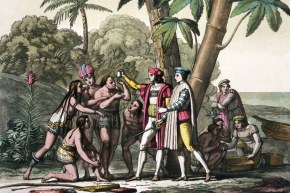
ST JOHN’S COLLEGE, UNIVERSITY OF CAMBRIDGE—A thousand-year-old tooth has provided genetic evidence that the so-called “Taíno”, the first indigenous Americans to feel the full impact of European colonisation after Columbus arrived in the New World, still have living descendants in the Caribbean today.
Researchers were able to use the tooth of a woman found in a cave on the island of Eleuthera in the Bahamas to sequence the first complete ancient human genome from the Caribbean. The woman lived at some point between the 8th and 10th centuries, at least 500 years before Columbus made landfall in the Bahamas.
The results provide unprecedented insights into the genetic makeup of the Taíno – a label commonly used to describe the indigenous people of that region. This includes the first clear evidence that there has been some degree of continuity between the indigenous peoples of the Caribbean and contemporary communities living in the region today.
Such a link had previously been suggested by other studies based on modern DNA. None of these, however, was able to draw on an ancient genome. The new research finally provides concrete proof that indigenous ancestry in the region has survived to the present day.
Comparing the ancient Bahamian genome to those of contemporary Puerto Ricans, the researchers found that they were more closely related to the ancient Taíno than any other indigenous group in the Americas. However, they argue that this characteristic is unlikely to be exclusive to Puerto Ricans alone and are convinced that future studies will reveal similar genetic legacies in other Caribbean communities.
The findings are likely to be especially significant for people in the Caribbean and elsewhere who have long claimed indigenous Taíno heritage, despite some historical narratives that inaccurately brand them “extinct”. Such misrepresentations have been heavily criticised by historians and archaeologists, as well as by descendant communities themselves, but until now they lacked clear genetic evidence to support their case.
The study was carried out by an international team of researchers led by Dr Hannes Schroeder and Professor Eske Willerslev within the framework of the ERC Synergy project NEXUS1492. The findings are published in the journal Proceedings of the National Academy of Sciences (PNAS).
Lead author Schroeder, from the University of Copenhagen who carried out the research as part of the NEXUS1492 project, said: “It’s a fascinating finding. Many history books will tell you that the indigenous population of the Caribbean was all but wiped out, but people who self-identify as Taíno have always argued for continuity. Now we know they were right all along: there has been some form of genetic continuity in the Caribbean.”
Willerslev, who has dual posts at St John’s College, University of Cambridge, and the University of Copenhagen, said: “It has always been clear that people in the Caribbean have Native American ancestry, but because the region has such a complex history of migration, it was difficult to prove whether this was specifically indigenous to the Caribbean, until now.”
The researchers were also able to trace the genetic origins of the indigenous Caribbean islanders, showing that they were most closely related to Arawakan-speaking groups who live in parts of northern South America today. This suggests that the origins of at least some people who migrated to the Caribbean can be traced back to the Amazon and Orinoco Basins, where the Arawakan languages developed.
The Caribbean was one of the last parts of the Americas to be populated by humans starting around 8,000 years ago. By the time of European colonization, the islands were a complex patchwork of different societies and cultures. The “Taíno” culture was dominant in the Greater, and parts of the Lesser Antilles, as well as the Bahamas, where the people were known as Lucayans.
To trace the genetic origins of the Lucayans the researchers compared the ancient Bahamian genome with previously published genome-wide datasets for over 40 present-day indigenous groups from the Americas. In addition, they looked for traces of indigenous Caribbean ancestry in present-day populations by comparing the ancient genome with those of 104 contemporary Puerto Ricans included in the 1000 Genomes Project. The 10-15% of Native American ancestry in this group was shown to be closely related to the ancient Bahamian genome.
Jorge Estevez, a Taíno descendant who works at the National Museum of the American Indian in New York and assisted the project team, said that as a boy growing up in the United States, he was told stories about his Taíno ancestors at home, but at school was taught that the same ancestors had died out. “I wish my grandmother were alive today so that I could confirm to her what she already knew,” he added. “It shows that the true story is one of assimilation, certainly, but not total extinction. I am genuinely grateful to the researchers. Although this may have been a matter of scientific inquiry for them, to us, the descendants, it is truly liberating and uplifting.”
Although indigenous Caribbean communities were island-based, the researchers found very little genomic evidence of isolation or inbreeding in the ancient genome. This reinforces earlier genetic research led by Willerslev, which suggests that early human communities developed surprisingly extensive social networks, long before the term had digital connotations. It also echoes ongoing work by researchers at the Faculty of Archaeology in Leiden and others indicating the connectedness of indigenous Caribbean communities.
Professor Corinne Hofman from Leiden University and PI of the NEXUS1492 project, said: “Archaeological evidence has always suggested that large numbers of people who settled the Caribbean originated in South America, and that they maintained social networks that extended far beyond the local scale. Historically, it has been difficult to back this up with ancient DNA because of poor preservation, but this study demonstrates that it is possible to obtain ancient genomes from the Caribbean and that opens up fascinating new possibilities for research.”
____________________________________
Entrance of Preacher’s Cave where the tooth was found that was used to reconstruct the ancient genome (Image courtesy of Jane Day).
_______________________________________________
Archaeological excavations Preacher’s Cave in the Bahamas where the tooth was found that was used to reconstruct the ancient genome (Image courtesy of Jane Day).
________________________________________________
Mandible from Preacher’s Cave. (Image courtesy of Jane Day).
____________________________________
First encounter. Columbus landing in the New World (Image courtesy of Library of Congress).
________________________________________________
Article Source: St. John’s College news release
________________________________________________
Become a new Popular Archaeology premium subscriber.
___________________________________________
Travel and learn with Far Horizons.
______
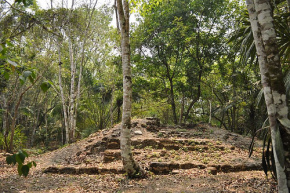
Recent news stories have directed the spotlight on the discovery of thousands of ancient Maya sites in the jungles of the Petén in Mesoamerica, still hidden under a tropical canopy. The knowledge of the likely existence of many such undiscovered sites in Mesoamerica is not new to archaeologists who specialize in the study of the ancient Maya, and the technology application known as LiDAR (Light Detection and Ranging, a remote sensing method using pulsed laser to “see” what cannot be seen by the naked eye on the ground) that was used to rediscover these sites is also not new. In fact, archaeologist Anabel Ford has been using the results of this technology application for years. The following video tells her story about the rediscovery and conservation of El Pilar, a large ancient Maya city that, for the most part, still lies enshrouded in its forest canopy. She describes the discovery of what she has dubbed the ‘citadel’, an ancient Maya structural complex that differs markedly from anything else revealed in the land of the ancient Maya. She also relates, on the ground, the unfolding tragedy of a Maya preserve and heritage that is under daily threat of destruction. More detail about her recent work on the mysterious Maya “citadel’ has been presented in the article, Uncovering the Citadel of El Pilar, published originally in the Spring 2016 issue of Popular Archaeology.
____________________________________
El Pilar: Preserving the Maya Legacy from UC Santa Barbara on Vimeo.
___________________________________________________
Become a new Popular Archaeology premium subscriber.
___________________________________________
Travel and learn with Far Horizons.
______
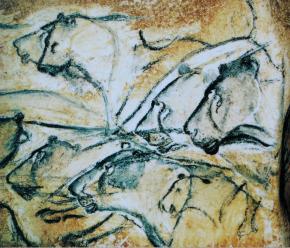
Neanderthals used thrusting spears to bring down tamer prey in Eurasia, while Homo sapiens, or modern humans, spent hundreds of thousands of years spear-hunting wary and dangerous game on the open grasslands of Africa.
Richard Coss, a professor emeritus of psychology, says the hand-eye coordination involved in both hunting with throwing spears and drawing representational art could be one factor explaining why modern humans became “smarter” than Neanderthals.
In an article recently published in the journal Evolutionary Studies in Imaginative Culture, Coss examines archaeological evidence, genomics, neuroscience studies, animal behavior and prehistoric cave art.
New theory of evolution
From this, he proposes a new theory for the evolution of the human brain: Homo sapiens developed rounder skulls and grew bigger parietal cortexes—the region of the brain that integrates visual imagery and motor coordination—because of an evolutionary arms race with increasingly wary prey.
Early humans hunted with throwing spears in sub-Saharan Africa for more than 500,000 years—leading their increasingly watchful prey to develop better flight or fight survival strategies, Coss said.
Some anthropologists have suggested that throwing spears from a safe distance made hunting large game less dangerous, he said. But until now, “No explanation has been given for why large animals, such as hippos and Cape buffalo, are so dangerous to humans,” he said. “Other nonthreatening species foraging near these animals do not trigger alert or aggressive behavior like humans do.”
Drawn from earlier research on zebras
Coss’ paper grew out of a 2015 study in which he and a former graduate student reported that zebras living near human settlements could not be approached as closely before fleeing as wild horses when they saw a human approaching on foot—staying just outside the effective range of poisoned arrows used by African hunters for at least 24,000 years.
Neanderthals, whose ancestors left Africa for Eurasia before modern human ancestors, used thrusting spears at close range to kill horses, reindeer, bison, and other large game that had not developed an innate wariness of humans, he said.
Hunting relates to drawing
“Neanderthals could mentally visualize previously seen animals from working memory, but they were unable to translate those mental images effectively into the coordinated hand-movement patterns required for drawing,” Coss writes.
Coss, who taught drawing classes early in his academic career and whose previous research focused on art and human evolution, used photos and film to study the strokes of charcoal drawings and engravings of animals made by human artists 28,000 to 32,000 years ago in the Chauvet-Pont-d’Arc Cave in southern France.
The visual imagery employed in drawing regulates arm movements in a manner similar to how hunters visualize the arc their spears must make to hit their animal targets, he concludes.
These drawings could have acted as teaching tools. “Since the act of drawing enhances observational skills, perhaps these drawings were useful for conceptualizing hunts, evaluating game attentiveness, selecting vulnerable body areas as targets, and fostering group cohesiveness via spiritual ceremonies,” he writes.
As a result, the advent of drawing may have set the stage for cultural changes, Coss said. “There are enormous social implications in this ability to share mental images with group members.”
________________________________________
Replica of drawing of lions painted in the Chauvet Cave. Art in the cave has been identified as created by early modern humans.
______________________________________________________
Article Source: University of California, Davis, news release
______________________________________________________
Become a new Popular Archaeology premium subscriber.
___________________________________________
Travel and learn with Far Horizons.
______
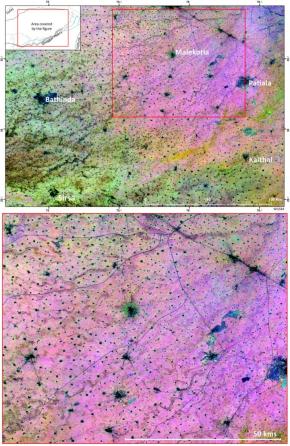
UNIVERSITY OF CAMBRIDGE—Remotely detecting changes in landforms has long relied upon the interpretation of aerial and satellite images. Effective interpretation of these images, however, can be hindered by the environmental conditions at the time the photo was taken, the quality of the image and the lack of topographical information.
More recently, data produced by photogrammetry and Light Detection and Ranging (LiDAR) models have become commonplace for those involved in geographical analysis – engineers, hydrologists, landscape architects and archaeologists.
In general, these techniques were designed to highlight small-scale ‘micro-topographies’ such as the expansive Mayan settlement network recently revealed in the dense jungles of Guatemala. But, how to connect the dots on a larger scale?
In new research published this week in the journal Earth Surface Processes and Landforms, Cambridge archaeologists present a new algorithm, Multi-Scale Relief Model (MSRM), which is able to extract micro-topographic information at a variety of scales employing micro-, meso- and large-scale digital surface (DSM) and digital terrain (DTM) models.
Dr Hector Orengo, researcher at the McDonald Institute for Archaeological Research and lead author of the study, said, “We originally developed this algorithm to complement multitemporal remote-sensing using multispectral satellite images that are currently being applied to the reconstruction of the prehistoric river network in northwest India as part of the TwoRains project.”
The TwoRains multitemporal remote sensing approach has had an important impact as it was able to find and accurately trace more than 8,000km of relict water courses; the image of which has been selected as the cover image of this year’s Cambridge Science Festival (see image above).
However, the authors were conscious that many ancient rivers were not being found. Dr Orengo said, “It soon became clear that detecting and mapping topographic features such as levees, riverbeds, bluff lines and dune fields could help provide insight into how palaeorivers behaved and eventually disappeared.”
“The new MSRM algorithm has addressed this need and its application has significantly extended our knowledge of the palaeoriver network of north-western India with more than 10,000 new rivers detected.”
Understanding how the Indus civilisation accessed and managed their water resources is at the heart of the TwoRains Project.
Dr Cameron Petrie, director of the ERC-funded project and co-author on the study, commented, “We are investigating the nature of human adaptation to the ecological conditions created by the winter and summer rainfall systems of India. These systems are important for understanding the past and planning for the future due to their potential for direct impact on very current issues such as food security and the sustainability of human settlement in particular areas.”
“Humans can adapt their behaviour to a wide range of climatic and environmental conditions, so it is essential that we understand the degree to which human choices in the past, present and future are resilient and sustainable in the face of variable weather conditions, and when confronted with abrupt events of climate change. Reconstructing the prehistoric hydrographical network of the Sutlej-Yamuna interfluve in northwest India helps us to understand these adaptations more fully.”
Dr Orengo believes that the new method has many uses outside the realm of archaeology. He commented, “The application of MSRM can also be beneficial to all other research fields aiming to interpret small terrain differences. We have made the code open access in the paper with the hope that others will be able to use it for their own interests, and also evaluate and improve it.”
______________________________________
A composite image of vegetation indices in Northwest India created from 1254 images reveals a complex palaeoriver network comprised of more than 8000km of palaeochannels. The new MSRM algorithm will contribute to mapping the complete ancient palaeoriver network of northwest India and to a better understanding of how the Indus Civilisation operated c. 2600-1900 BC. Hector A. Orengo
__________________________________________________
Article Source: University of Cambridge news release
___________________________________________________
Become a new Popular Archaeology premium subscriber.
___________________________________________
Travel and learn with Far Horizons.
______
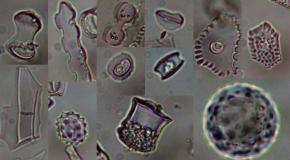
UNIVERSITY OF ARIZONA—The massive Toba volcanic eruption on the island of Sumatra about 74,000 years ago did not cause a six-year-long “volcanic winter” in East Africa and thereby cause the human population in the region to plummet, according to new University of Arizona-led research.
The new findings disagree with the Toba catastrophe hypothesis, which says the eruption and its aftermath caused drastic, multi-year cooling and severe ecological disruption in East Africa.
“This is the first research that provides direct evidence for the effects of the Toba eruption on vegetation just before and just after the eruption,” said lead author Chad L. Yost, a doctoral candidate in the UA Department of Geosciences. “The Toba eruption had no significant negative impact on vegetation growing in East Africa.”
Researchers can use ancient plant parts that wash into and accumulate on the bottoms of lakes to reconstruct a region’s past ecosystem. Yost and his colleagues studied microscopic bits of plants preserved in two sediment cores from Lake Malawi, which is approximately 570 kilometers (354 miles) long and is the southernmost of the East African Rift lakes.
Previous investigators found material from the Toba eruption in the Lake Malawi cores. That material pinpoints the time of the eruption and allowed Yost and colleagues to peer back in time 100 years before to 200 years after the Toba eruption. The team analyzed samples that represented, on average, every 8.5 years within that 300-year interval.
“It is surprising,” Yost said. “You would have expected severe cooling based on the size of the Toba eruption–yet that’s not what we see.”
Yost and his colleagues did not find marked changes in lower-elevation vegetation post-eruption. The team did find some die-off of mountain plants just after the eruption. Cooling from the eruption might have injured frost-intolerant plants, he said.
Had the region experienced the drastic, multi-year cooling post-Toba, the cores would have evidence of a massive die-off of the region’s vegetation at all elevations, Yost said.
Part of the Toba catastrophe hypothesis suggests the eruption caused human populations to shrink.
“We know anatomically modern humans were living within 50 kilometers of Lake Malawi,” Yost said. “People would have been able to travel to habitats and lower elevations that had little to no cooling effect from the Toba eruption.”
Most of the region’s known archaeological sites are from low elevations, not the mountains, he said.
Co-author Andrew S. Cohen, UA Distinguished Professor of Geosciences, said, “That a singular event in Earth history 75,000 years ago caused human populations in the cradle of humankind to drop is not a tenable idea.”
The team’s paper, “Subdecadal phytolith and charcoal records from Lake Malawi, East Africa imply minimal effects on human evolution from the ~74 ka Toba supereruption,” is published online this week in the Journal of Human Evolution.
Yost’s and Cohen’s co-authors are Lily J. Jackson of the University of Texas at Austin, and Jeffery R. Stone of Indiana State University, Terre Haute. The National Science Foundation and the International Continental Scientific Drilling Program funded the research.
The Lake Malawi Drilling Project took the cores from the lake bottom in 2005, said Cohen, one of the principal investigators on the collaborative project. The lake is one of the deepest in the world. The material archived in the cores goes back more than one million years.
Plant and animal material washes into lakes and is deposited on the bottom in annual layers, so a sediment core contains a record of the past environments of a lake and of the surrounding land.
Yost studied two cores taken from the lake: one from the north end of the lake, which is closer to the mountains, and the other from the central part of the lake. Other researchers had pinpointed what layer in those cores had glass and crystals from the Toba eruption, Cohen said.
Yost took samples from the cores that straddled the eruption and analyzed the samples for charcoal and for silica-containing plant parts called phytoliths.
The work required hundreds of hours of peering through a microscope, said Yost, who is an expert in identifying the type of plant a particular phytolith came from.
If the Toba catastrophe hypothesis is true, the massive die-off of vegetation would have resulted in more wildfires and therefore more charcoal washing into the lake. However, he did not find an increase in charcoal outside the range of normal variability in the sediments deposited after the eruption.
“We determined that the Toba eruption had no significant negative impact on vegetation growing in East Africa,” Yost said. “We hope this will put the final nail in the coffin of the Toba catastrophe hypothesis.”
____________________________________
Members of the Lake Malawi Drilling Project science team handle the corer—part of the equipment used to collect sediment cores from the bottom Lake Malawi. Note the sediment in the end of the metal tube. Courtesy of the Lake Malawi Drilling Project
________________________________________________
Microscopic plant remains, called phytoliths, from grasses, sedges, palms, forbs, and trees that lived near Lake Malawi in East Africa about 74,000 years ago. Chad L. Yost, University of Arizona Department of Geosciences
________________________________________________
Article Source: University of Arizona news release
_________________________________________________
Become a new Popular Archaeology premium subscriber.
___________________________________________
Travel and learn with Far Horizons.
______